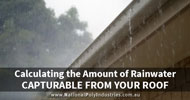
Water Tanks in Tamworth Region: State and Council Requirements for Residential Homes
June 15, 2018
The Tamworth Region, located in inland NSW (north-western), covers 9,653 square kilometres from the Nandewar Range north of Barraba, to the head of the Peel River and the Great Dividing Range. It has the charm of country living combined with a progressively city style and is estimated to have a population of over 58,000 people. […]













